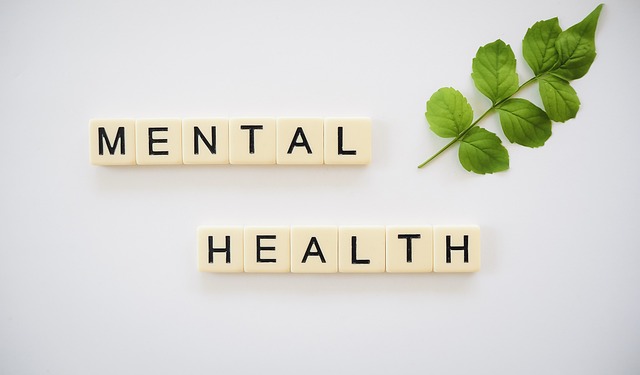January 6, 2023 Imphal By Banti Phurailatpam:
As winter blankets the world in a serene layer of snow, it brings with it a unique set of challenges for many individuals. The colder months can usher in a mood disorder known as Seasonal Affective Disorder (SAD), casting a shadow over mental health. In this exploration of the winter blues, we delve into the intricacies of Seasonal Affective Disorder, its impact on mood, and practical strategies to prioritize mental well-being during the winter months.
Contents
- 1 Embracing the Winter Chill: Seasonal Affective Disorder Unveiled
- 2 The Winter Blues and Mood Disorders: A Seasonal Symphony of Emotions
- 3 Winter’s Grasp on Mental Health: Navigating the Impact of Seasonal Affective Disorder
- 4 Sunlight Deprivation and Seasonal Affective Disorder: Illuminating the Connection
- 5 Combatting the Winter Blues: Strategies for Mental Well-Being
- 6 Winter Self-Care Rituals: Nurturing Mental Health in the Cold Embrace
- 7 The Therapeutic Power of Winter Scenery: Nature’s Role in Mental Wellness
- 8 Seeking Professional Support: A Beacon in the Winter Storm of SAD
- 9 Conclusion: Illuminating the Path to Winter Resilience
Embracing the Winter Chill: Seasonal Affective Disorder Unveiled
Seasonal Affective Disorder, often abbreviated as SAD, is a type of mood disorder that follows a seasonal pattern, typically emerging during the winter months when sunlight exposure is reduced. It manifests as a range of symptoms akin to depression, including low energy, persistent sadness, and difficulty concentrating. Acknowledging the existence of SAD is the first step in understanding the complex interplay between seasons and mental health.
The Winter Blues and Mood Disorders: A Seasonal Symphony of Emotions
As winter descends and daylight dwindles, individuals susceptible to Seasonal Affective Disorder may find themselves grappling with a symphony of emotions. The lack of sunlight can disrupt circadian rhythms and lead to imbalances in neurotransmitters such as serotonin and melatonin, contributing to mood disorders. Understanding this intricate dance between external stimuli and internal chemistry sheds light on the holistic nature of mental health.
The winter season’s impact on mental health, particularly concerning Seasonal Affective Disorder, goes beyond a mere case of the “winter blues.” The persistent low mood, lethargy, and changes in sleep patterns can significantly affect daily functioning. For those predisposed to mood disorders, the winter months may amplify existing challenges, necessitating a proactive approach to mental health maintenance.
Sunlight Deprivation and Seasonal Affective Disorder: Illuminating the Connection
Sunlight, or the lack thereof, plays a pivotal role in the development of Seasonal Affective Disorder. Reduced exposure to natural light during the shorter days of winter disrupts the body’s internal clock, leading to a cascade of hormonal changes. Melatonin, the hormone associated with sleep, may increase, contributing to feelings of lethargy, while serotonin, a neurotransmitter linked to mood, may decrease. Recognizing this intricate connection highlights the importance of sunlight in maintaining mental equilibrium.
Combatting the Winter Blues: Strategies for Mental Well-Being
Amidst the challenges posed by Seasonal Affective Disorder, a spectrum of strategies exists to bolster mental well-being during the winter months. Incorporating light therapy, where individuals expose themselves to bright artificial light, can mitigate the effects of reduced sunlight. Additionally, embracing outdoor activities during daylight hours, staying physically active, and fostering social connections contribute to a holistic approach in combating the winter blues.
Winter Self-Care Rituals: Nurturing Mental Health in the Cold Embrace
As winter tightens its grip, prioritizing self-care becomes paramount in nurturing mental health. Establishing comforting rituals, such as indulging in warm beverages, practicing mindfulness, or engaging in creative pursuits, can serve as anchors amid the seasonal fluctuations of mood. Self-care rituals act as a reminder that tending to one’s mental health is a continuous and essential practice.
The Therapeutic Power of Winter Scenery: Nature’s Role in Mental Wellness
Nature, even in its winter cloak, possesses therapeutic qualities that can positively influence mental wellness. Engaging with winter scenery, whether through a serene walk in a snow-covered park or the contemplation of a frost-kissed landscape, can evoke a sense of tranquility. Integrating nature into daily routines becomes a potent tool in counteracting the effects of Seasonal Affective Disorder.
Seeking Professional Support: A Beacon in the Winter Storm of SAD
For individuals grappling with the profound impact of Seasonal Affective Disorder, seeking professional support is a beacon in the winter storm. Mental health professionals can offer guidance, therapeutic interventions, and personalized strategies to navigate the complexities of SAD. Acknowledging the need for assistance is a courageous step towards reclaiming mental well-being.
Conclusion: Illuminating the Path to Winter Resilience
As winter unfolds its serene tapestry, individuals traversing the landscape of Seasonal Affective Disorder can find solace in understanding, self-care, and professional support. The interplay between winter, mood disorders, and mental health underscores the interconnected nature of our well-being. By illuminating the path to winter resilience, we empower ourselves to navigate the seasonal nuances of mood, ensuring that the winter blues do not overshadow the brilliance of mental wellness.





